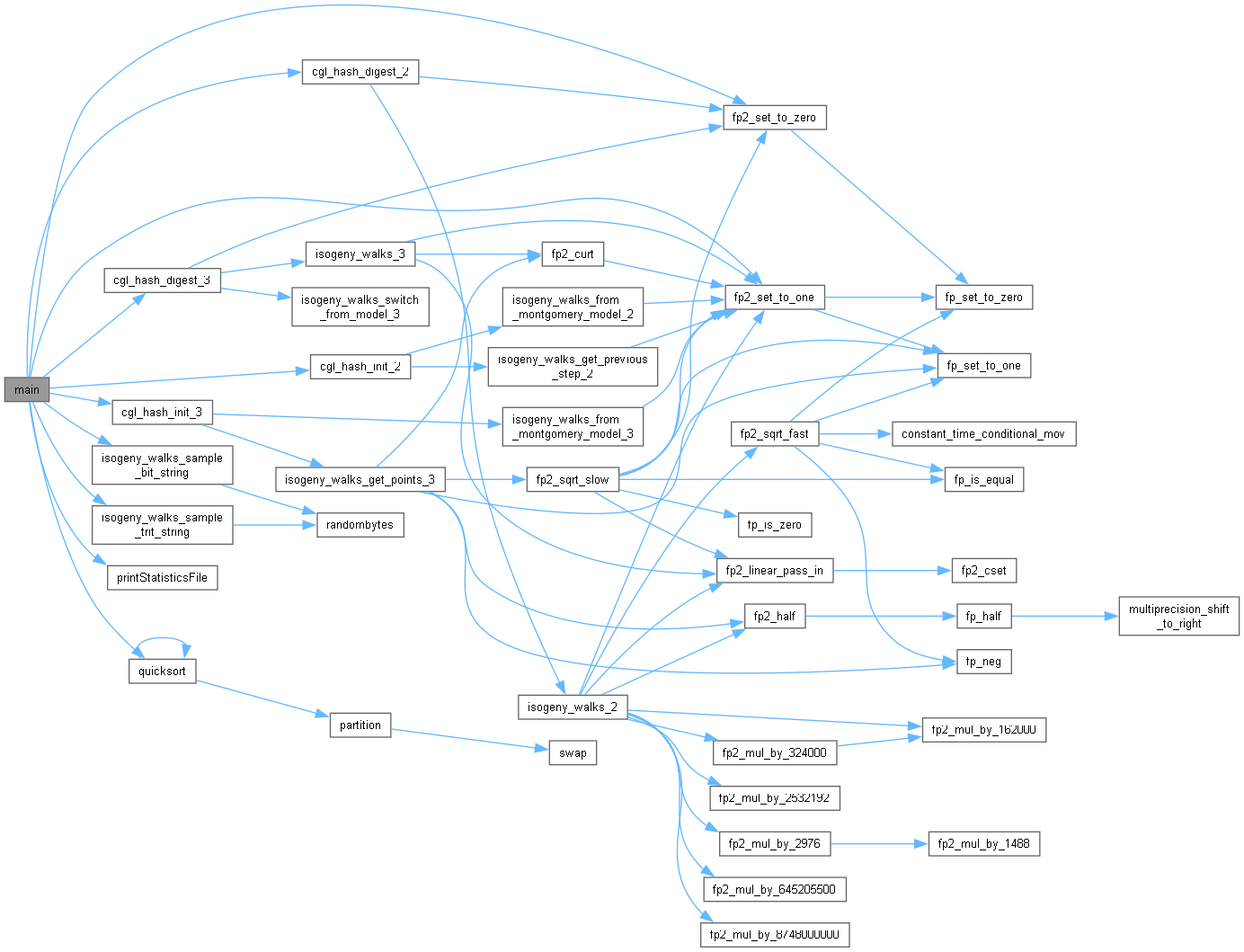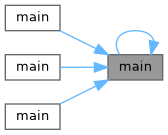#include <stdio.h>#include <cgl_hash.h>#include "benchmarks_utils.h"#include <string.h>#include <utilities.h>
Go to the source code of this file.
Functions | |
| void | swap (ticks *a, ticks *b) |
| int | partition (ticks arr[], int low, int high) |
| void | quicksort (ticks arr[], int low, int high) |
| int | main (int argc, char **argv) |
Function Documentation
◆ main()
| int main | ( | int | argc, |
| char ** | argv | ||
| ) |
Definition at line 55 of file benchmarks_main.c.
References BIT_LENGTH_PATH, cgl_hash_digest_2(), cgl_hash_digest_3(), cgl_hash_init_2(), cgl_hash_init_3(), FIELD_NAME, fp2_add, fp2_set_to_one(), fp2_set_to_zero(), i, isogeny_walks_sample_bit_string(), isogeny_walks_sample_trit_string(), main(), NUMBER_OF_BENCHMARK_EXPERIMENTS, printStatisticsFile(), quicksort(), and TRITLENGTH_PATH.
Referenced by main(), main(), main(), and main().


◆ partition()
| int partition | ( | ticks | arr[], |
| int | low, | ||
| int | high | ||
| ) |
Definition at line 20 of file benchmarks_main.c.
References i, j, partition(), and swap().
Referenced by partition(), and quicksort().


◆ quicksort()
Definition at line 42 of file benchmarks_main.c.
References partition(), and quicksort().
Referenced by main(), and quicksort().


◆ swap()
Definition at line 9 of file benchmarks_main.c.
References a.
Referenced by action(), and partition().
